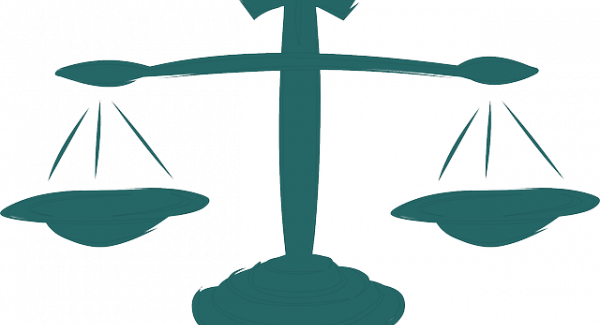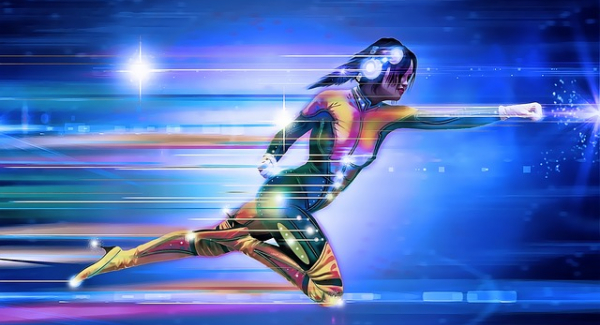
Some years ago, when I first began writing about the evolution of human sociality, a colleague put to me the question: Why are humans still social? That “still” was weighty with meaning—the idea of a primal solitary state, to which humans might return, perhaps finally freed from group living by technological progress. I was dumbfounded. Humans have no choice but to live in groups. They are unable to reproduce and survive to reproductive age without a group, which makes them obligately interdependent. That interdependence is inscribed upon the body. We lack natural defenses such as impressive canines or tough hides. We have an extended, care-intensive infancy. And we have traits, such as omnivory and tool making, that enabled humans to exploit rainforests and tundra, but that create dependence on collective knowledge and cooperative information sharing. Humans are still social because they must be.
My colleague understood all this. He was asking a theoretical question. From the “gene’s eye view” of evolution, standard in evolutionary psychology, solitary life is the default assumption. Group living has considerable downsides: the spread of disease, competition for mates, and exploitation by free riders to name just a few. Unless group living has advantages (in terms of an increase in the number of copies of a given gene) that outweigh the costs (the decline in number of gene copies), groups would logically disperse. The logic is indisputable. The anthropomorphic metaphor is a shortcut to saying that any heritable genetic variation that resulted in a relative advantage to the organism in its survival and reproduction would increase the frequency of those genes in a population. The organism may be altruistic, cooperative, self-interested or even eat most of its own offspring so long as more copies of its genes, relative to the competing alternatives, are passed to succeeding generations.
The problem with the gene’s eye view is the uses to which we want to put it. Genes are below the level of the organism. The gene’s eye view is blind to the distinctions between social and asocial organisms (Caporael, 2007). As a result, the same theory serves for any species, oysters to humans, given what we know—or think that we know—about the species. Yet in psychology, one reason we turn to evolutionary considerations is that we really do not know what are the “basic units” for describing our species. (The temptation is to say adaptations are the basic unit, but there is still a lot of debate about what are adaptations and how do we know them when we see them?) Acknowledging that we are interdependent, group-living animals may take us closer to developing theories to understand the human mind.
The Minimalist Scenario
Most behavioral scientists would agree that humans have evolved to live in groups, at least for protection from predators and some degree of food sharing. However, it helps to draw out the implications of the evolutionary dynamics. The earliest bipedal ancestors were about a meter tall, lacked tools, had a brain the size of a chimpanzee’s, but lacked its strength and impressive canine teeth. As solitary individuals, they would have been more likely to be the dinner than the diner in their local neighborhoods. Like other primates, they probably deterred predators with alarm calls and mobbing. A weaponless group of hominids, jumping up and down waving their arms at a leopard is more likely to survive than the lone bipedal forager. A fruit tree or a ripe zebra carcass is more food than a solitary hominid could eat and more likely to be found by a group of searchers than a single pair of eyes. Even these simple tasks require some degree of coordination, not unusual in the animal world. For our early ancestors, group living buffered individuals from the risks of predation and starvation.
A group can be only so large, limited as it is by the carrying capacity of the habitat and the distance that can be walked. However, too small a group may fail to buffer individuals. The upper and lower limits on group size creates a competition for “niches” in the group. Over time it would result in the evolution of perceptual, affective and cognitive processes that support the development and maintenance of group membership. In a nutshell, the minimalist scenario states: To the extent that exploiting a habitat is more efficient as a collective rather than an individual process, not only would better coordinated groups prevail, but so also would individuals that were better adapted to group living. Being adapted to group living does not imply self-sacrifice or “genes for” altruism. Selection occurs at two levels, individual and group, and as a result, humans are ambivalently social, engaged in a perpetual juggling act between individual identity, interpersonal relationships and collective interests simultaneously (Brewer & Caporael, 2006).
The minimalist scenario is a fairly general model. Anthropologists who have studied hunter-gatherer groups suggest that there are “magic numbers” for group size, “magic” because they recur in anthropological and archaeological research (although, with less drama, we should probably call these numbers “basins of attraction” or “centers of gravity”). These group sizes also correspond to functional categories in hunter-gatherer groups: task groups (such as a group of foragers or hunters), residential bands (the men, women and children who resided more or less consistently in a community), and aggregations of bands, called “macrobands” (the seasonal gathering of bands who shared a common language, cosmology and ancestors). Quite independently, similar group sizes have also been observed in the functional organization of science (Hull, 1988).
We are so accustomed to thinking of ourselves as individuals that it seems implausible that there should be consistency in group size that can be detected across time, from the Pleistocene to the present, and across cultures, from Kung Bushmen to American scientists. There are at least two reasons that make the idea more plausible. One is that the essence of sociality is the coordination of activity. The other is that the form of our bodies constrains coordination in specific ways.
Two friends tend automatically to fall into walking at the same gait. Five friends can march in step, but they typically clump, lag, string along and regroup. The synchrony in two people’s walking is a product of psychological mechanisms coordinating perception and action. It requires no thought, intention or practice. Sometimes this synchrony of movement maintains “twoness,” even when it is a problem. Imagine two strangers walking toward each other in a direct line. They dance and jerk trying to avoid bumping into each other until one or both manages to break the coordination. Consider another example: Five strangers in an elevator are simply an aggregate of five people, each lost in his or her own thoughts—what to have for dinner? who was that stranger on the phone? oh, I wish I were on my summer vacation… Should the elevator stop suddenly between floors, this aggregate of individuals is psychologically transformed into a working group. They are strangers still, but coordinating suggestions, explanations, observations and emotions—a product of shared fate and a problem to solve. What was an aggregate of people a moment ago is now a coordinated group ready to tackle a task.
Core Configurations
Dyads, composed of two people, and task groups, composed of about five to seven people, are examples of core configurations. For a group configuration (and there are many types of them) to be “core,” it must repeatedly assemble in human development, in daily life, and plausibly in evolutionary time, given available evidence. Like many other types of groups, core configurations are interdependent, face-to-face groups that enable different kinds of activity. In the above examples, dyads allow microcoordination between partners; task groups facilitate problem solving. In the anthropological literature, a band is composed of about thirty people and serves domestic functions—butchering, preparing food for storage, child-rearing. Although humans don’t live in bands in the modern world, we should still expect to see some traces in social cognitive processes and structure. The same goes for macrobands, which approximated the group size necessary to maintain genetic viability for humans. The seasonal gatherings of macrobands functioned for reproduction, competitive games and information about distant areas.
The relevance of tasks (from an evolutionary perspective) for a configuration is not the activity per se, but rather the set of social cognitive processes—afforded by the core configuration—that enable the activity. As is typical in evolutionary explanations, there is a “chicken and egg” character—neither core configurations nor their psychological correlates come first.
We can formalize the model (Table 1). The central thesis is that face-to-face group living functioned in the past—and continues to function—as an interface between individual and habitat. The four configurations—dyad, task group, band and macroband—are organized as a nested hierarchy. (This is a structural hierarchy, not to be confused with political hierarchy.) Each group configuration allows specialized cognitive functions to evolve and also presents coordination problems that are different from other levels. The dyad affords possibilities for micro-coordination (e.g., facial imitation in a mother-infant dyad, the automatic adjustment of gait that occurs when two people walk together, the interaction between a trainer and an animal). The task group affords possibilities for distributed cognition, which refers to shared cognitive tasks such as perception, classification, inference and contextually-cued response. The band affords a shared construction of reality—“common knowledge”—that also mediates interaction in macrodemes and other superordinate group configurations. Macrobands afford the stabilization and standardization of language, signs and symbols. The specialized functions of these core configurations are hypothesized to be recurrent across generations, across cultures and in development. Core configurations would also differ in how deeply entrenched they are. Dyads are deeply entrenched because of their special role in reproduction, including infant development. A dramatic change affecting their evolved functions should predict mostly poor developmental outcomes. In contrast, macrodemes are shallowly entrenched and are relatively easy to modify. While modern urban humans don’t live in bands or macrobands anymore, we do have crosscutting groups of similar sizes having various agendas, utilizing its functional specialties.
Science is an interesting illustration. In both instances—in science and among hunter-gatherers—group-size numbers at these levels are fairly constant: dyads, groups of about 3-5 individuals, 30-50 individuals, and 100-500 individuals (Birdsell, 1972; Hull, 1988). In both cases, isolates have reduced viability (isolated scientists publish less), and must be part of a subgroup with sufficient "critical mass" to persist. Similarities of function also exist in the organizational structures of scientists and hunter-gatherers. Learning to fashion specialized tools, in stone or other materials, or to use specialized laboratory techniques, such as blowing a glass pipette, is typically a dyadic, hands-on, situated activity. Becoming skilled at these tasks requires learning and feedback from materials, equipment, and an experienced mentor. A specialty of both small research groups and small foraging parties appears to be interpreting ambiguous stimuli such as an animal track on a trail or a proton track on a photo. In hunter-gatherer task groups, food from the hunt is often brought back to the domestic base and shared in the band. Among scientists, research results and their interpretation are brought back to the “conceptual band” in the form of workshops and small intimate conferences. In hunter-gatherer macrobands and yearly scientific conferences, young people are exchanged, disgruntled people find new group membership, specialized languages are standardized, and myths, gossip and information about more distant areas and groups are exchanged. Macrodemes are also the prototypic forerunner of ethnic groups (Brewer & Caporael, 2006).
From a developmental perspective, obviously every human is born into a dyad of child and caregiver, which is itself a component of a group. Groups have rules and practicesthat affect the survival and potential reproduction of their members. Some cultures practice infanticide of strong, healthy babies; others practice state-of-the-art medicine to save premature newborns. As the newborn that survives birth develops, he or she participates in a widening scope of group activity, which also influences survival and reproduction and the beginning of a new cycle. We think of infants becoming increasingly independent as they develop. What happens in practice, however, is that they become increasingly interdependent. Very young infants interact with a single caregiver at a time; as they get older and they achieve better control over their bodies, they interact with families and small playgroups. The classroom is typically an even larger group, about the size of a band, and by high school and the beginning of work life students easily recognize themselves as part of a larger group contexts, say, of the Amsterdam High School student body macroband, which is itself part of a school district in a town in a county in a region in a country. Unlike many other mammals, the expansion of interdependency distinguishes the human adult from the juvenile.
Why We’re Still Social
If group-living is the mind’s natural environment, we should expect corresponding psychological adaptations that not only respond to structural features of groups and tasks, but also function to maintain them. Groups organize experience, manufacture knowledge, and assign value (Baumeister, 2005). Expert skiers recognize varieties of snow; they not only ski on it, they also talk and compare their experience of snow, preferring some kinds to other kinds. Nonskiers see just snow, sometimes wet snow, sometimes dry snow—and they prefer spring, anyway. The stream of experience must be organized, evaluated and explained. Parents describe a young child puttering in the kitchen “mixing stuff” as “practicing chemistry” if said child is male, “practicing cooking” if female. The actual behavior may be identical, but the description of the experience propels one child toward a future career, and the other toward a future meal. For humans, experience itself, from infancy through death, is transformed into preferences and knowledge through groups. For one group, the lights in the night sky are gaseous balls of flame; for another, the lights in the night sky are holes in the floor of heaven. Organizing and evaluating perceptions of things and people is a constant nonstop activity of face-to-face groups. All human interactions in the world take place in groups or through meanings and artifacts born in groups. On the one hand we are realists, having a physical world to negotiate; on the other, we are social constructivists, creating shared meaning and values.
Humans have dramatically altered their social and material environments over the past ten millennia, and especially in the last 300 years. New technologies have broken the ties of time and space that have always held human groups together. Telecommunications and transportation technologies no longer require us to be members of ingroups composed of immediate neighbors; we can “reach out and touch” someone by telephone, meet our friend from Los Angeles in Paris tomorrow, or conduct our intellectual jousting through the Internet. Clearly the functions that evolve and develop in core configurations are capable of being extended, combined and used in new domains. In times of war, for example, television can extend ingroup biases (and sometimes even challenge them). The spatial relations between human bodies and the material world have not been altered, but we have started to learn to use technology as a bridge between the functions of configurations. A heart surgery team combines microcoordination and distributed cognition. A group of 500 people given an order to march on a football field are likely to clump and straggle, but if a rousing marching song is broadcast, they can hardly avoid keeping time. In an airplane, a pilot and co-pilot fiddling with their controls engage fine hand-eye coordination, a relatively ancient human activity; for 400 strangers to share the close quarters of the plane is novel component of human flight. What does alter—and not in any perceptible linear or progressive fashion—is the reconceptualization of human possibilities and the invention of human nature.
References
Baumeister, R. F. (2005). The cultural animal. New York: Oxford University Press.
Birdsell, J. B. (1972). An introduction to the new physical anthropology. Chicago: Rand McNally.
Brewer, M. B., & Caporael, L. R. (2006). An evolutionary perspective on social identity: Revisiting groups. In J. A. Simpson, M. Schaller & D. T. Kenrick (Eds.), Evolution and social psychology (pp. 143-161). Philadelphia: Psychology Press.
Caporael, L. R. (2003). Repeated assembly. In S. Schur & F. Rauscher (Eds.), Alternative approaches to evolutionary psychology(pp. 71-90): Kluwer.
Caporael, L. R. (2007). Evolutionary theory for social and cultural psychology. In A. W. Kruglanski & E. T. Higgins (Eds.), Social psychology: Handbook of basic principles (2nd ed., pp. 3-18). New York: Guilford.
Hull, D. L. (1988). Science as a process. Chicago: University of Chicago Press.




